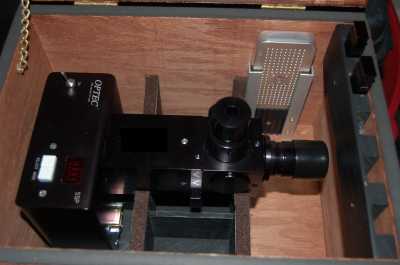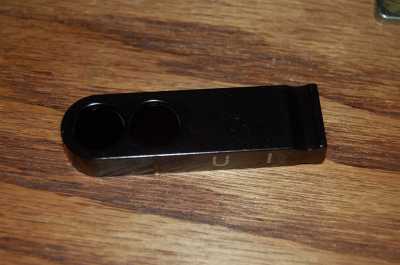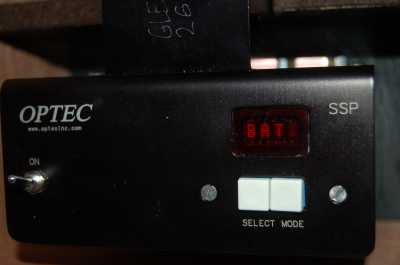Copyright 2009 Starry Mirror



The
TM
Astronomy From West Virginia
USING AN OPTEC SSP-3 PHOTOMETER
BRIDGEPORT, WV (S-M) - Here at our observatory, we have been making good use of the Optec SSP-3 solid state photometer. Although we have other photometers available, the Optec has proven to be the most easy to use. For stars which are bright enough, the Optec is just as accurate as a photomultiplier unit, with errors running as small as .001 magnitude.
The nice thing about this photometer is that it is self-contained. There is only one power supply cord to plug in. The solid-state photodiode detector cannot be damaged by bright light, and the heavy-duty machined construction looks like it will last forever. A serial port allows readings to be captured by a computer, saving the trouble of manually recording data. Yet, a battery and LED display make it possible to use the unit where power is not available, if need be.
On a ten inch telescope, we have found the photometer gives acceptable data down to about magnitude 8.5. Although this might seem weak to those not familiar with photometry, it is actually quite a good showing. Most photometry dimmer than this is done with CCDs these days, and photometers are reserved for brighter stars. CCDs have trouble with brighter stars, due both to a lack of bright comparison stars in any given field, and nonlinearity of some cameras' responses on brighter stars.
The photodiode used in the SSP-3 has exceptional sensitivity in the red end of the spectrum. This is just the opposite of most photomultiplier photometers, which are very sensitive to blue but generally blind to red light. The SSP-3 gets very strong readings through R and I filters, and this is an area which still has much room for exploration.
The SSP is also available in an SSP-5 version which uses a photomultiplier tube. With the tube, the photometer can go about as dim as the stars visible in any given telescope. However, the tube version of this photometer is far more expensive, especially if a red-sensitive tube is purchased. Since most photometry these days is done on brighter stars, or in college observatories, we would guess that the SSP-3 solid state photometer will fulfill most photometry needs quite well. - GW

The SSP comes in a nice wooden box with the filters stored on the right and a dessicant pack.

The filter sliders are only a couple of inches long and are not easy to handle in the dark.

All features are selected using the two white buttons. The readout gives deflections to four digits.